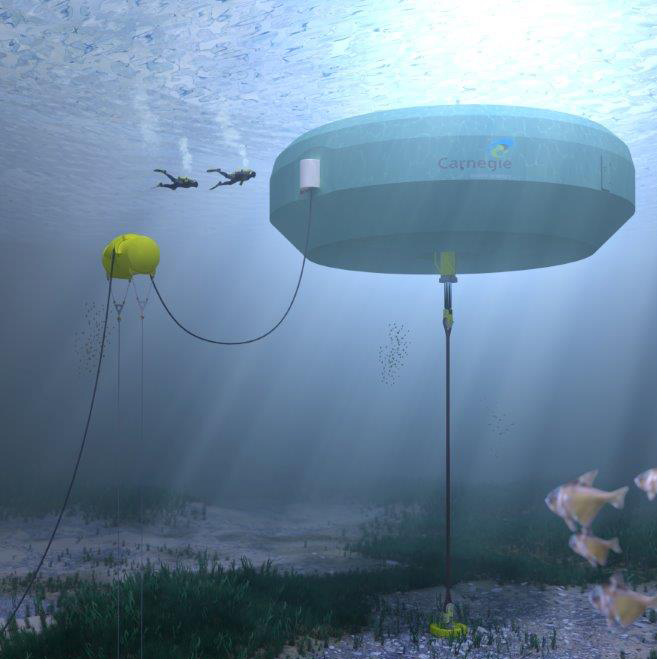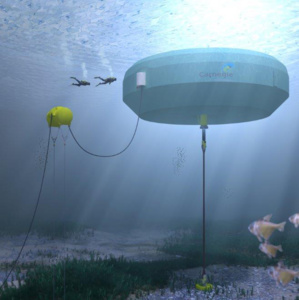Dailycsr.com – 05 October 2015 – An announcement made by MathWorks declared that “Model-Based Design” used by “Carnegie Wave Energy” to create the first ever and one and only “operating wave farm”. In collaboration with “MATLAB and Simulink” the engineers from Carnegie Wave Energy were able to develop the said technology which unique and generates “clean electric power from the ocean’s waves”.
The said construction forms part of the “Perth Wave Energy Project”. In order to show case the viability of Carnegie’s “CETO technology”, the project took shape, which with the help of CETO produces electricity “from ocean swells via submerged buoys”. Before designing the same, engineers spent time analyzing how load could be placed “on mechanical components” along with estimating “energy output”; the latter was done without any “scale model of the entire system”.
SimHydraulics and Simulink were used to imitate “wave energy system” which also took into consideration the components of electro-mechanics and hydraulics. This way, the scale of the model was minimised and insightful information were gathered. Data collected thus were analysed whereby “visualize simulation” were also presented. These attempts set forth the criteria for “sensitivity studies”. Carnegie’s chief technology officer, Jonathan Fiévez said:
“We can’t afford the time and expense of building and analyzing multiple physical prototypes. Instead, we put the effort into virtual prototyping and getting the design right in Simulink. Simulation reduces risk and fosters innovation because we can use it to quickly test novel ideas.”
While, the MathWorks’ manager of “Energy Industry” Graham Dudgeon, informed:
“As companies work on technology to help generate clean energy, they need innovative ways to prove the systems they design will work --- without investing resources in building out a full scale model that may be far from final. With Model-Based Design, companies can iterate on and test virtual prototypes to quickly arrive at the most successful mix of components and models within the design.”
The virtual proto-type of the “5 technology” was fabricated with the help of Simulink, whereby pumps were used to actuate the motion of buoys that pressurized water “to drive hydroelectric conversion devices”. The buoys were eleven meters in diameters and generated almost “240 kW of power per unit”. The data provided by MATLAB was analysed for validating the ocean farm model, whereby the engineers realised that the initial data show
“...a strong correlation between the modeled and measured results”.
At present, Carnegie is developing CETO 6 which is to give an output of “1 MW per buoy”. Moreover, the same will placed off the shoreline of Garden Island, which is situated in the western part of Australia.
Moreover, BussinesWire writes:
“MathWorks is the leading developer of mathematical computing software. MATLAB, the language of technical computing, is a programming environment for algorithm development, data analysis, visualization, and numeric computation. Simulink is a graphical environment for simulation and Model-Based Design for multidomain dynamic and embedded systems”.
References:
http://www.businesswire.com
The said construction forms part of the “Perth Wave Energy Project”. In order to show case the viability of Carnegie’s “CETO technology”, the project took shape, which with the help of CETO produces electricity “from ocean swells via submerged buoys”. Before designing the same, engineers spent time analyzing how load could be placed “on mechanical components” along with estimating “energy output”; the latter was done without any “scale model of the entire system”.
SimHydraulics and Simulink were used to imitate “wave energy system” which also took into consideration the components of electro-mechanics and hydraulics. This way, the scale of the model was minimised and insightful information were gathered. Data collected thus were analysed whereby “visualize simulation” were also presented. These attempts set forth the criteria for “sensitivity studies”. Carnegie’s chief technology officer, Jonathan Fiévez said:
“We can’t afford the time and expense of building and analyzing multiple physical prototypes. Instead, we put the effort into virtual prototyping and getting the design right in Simulink. Simulation reduces risk and fosters innovation because we can use it to quickly test novel ideas.”
While, the MathWorks’ manager of “Energy Industry” Graham Dudgeon, informed:
“As companies work on technology to help generate clean energy, they need innovative ways to prove the systems they design will work --- without investing resources in building out a full scale model that may be far from final. With Model-Based Design, companies can iterate on and test virtual prototypes to quickly arrive at the most successful mix of components and models within the design.”
The virtual proto-type of the “5 technology” was fabricated with the help of Simulink, whereby pumps were used to actuate the motion of buoys that pressurized water “to drive hydroelectric conversion devices”. The buoys were eleven meters in diameters and generated almost “240 kW of power per unit”. The data provided by MATLAB was analysed for validating the ocean farm model, whereby the engineers realised that the initial data show
“...a strong correlation between the modeled and measured results”.
At present, Carnegie is developing CETO 6 which is to give an output of “1 MW per buoy”. Moreover, the same will placed off the shoreline of Garden Island, which is situated in the western part of Australia.
Moreover, BussinesWire writes:
“MathWorks is the leading developer of mathematical computing software. MATLAB, the language of technical computing, is a programming environment for algorithm development, data analysis, visualization, and numeric computation. Simulink is a graphical environment for simulation and Model-Based Design for multidomain dynamic and embedded systems”.
References:
http://www.businesswire.com


 Carnegie Presents World’s First ‘Wave Farm’ That Generates Clean Electricity
Carnegie Presents World’s First ‘Wave Farm’ That Generates Clean Electricity





 Companies
Companies